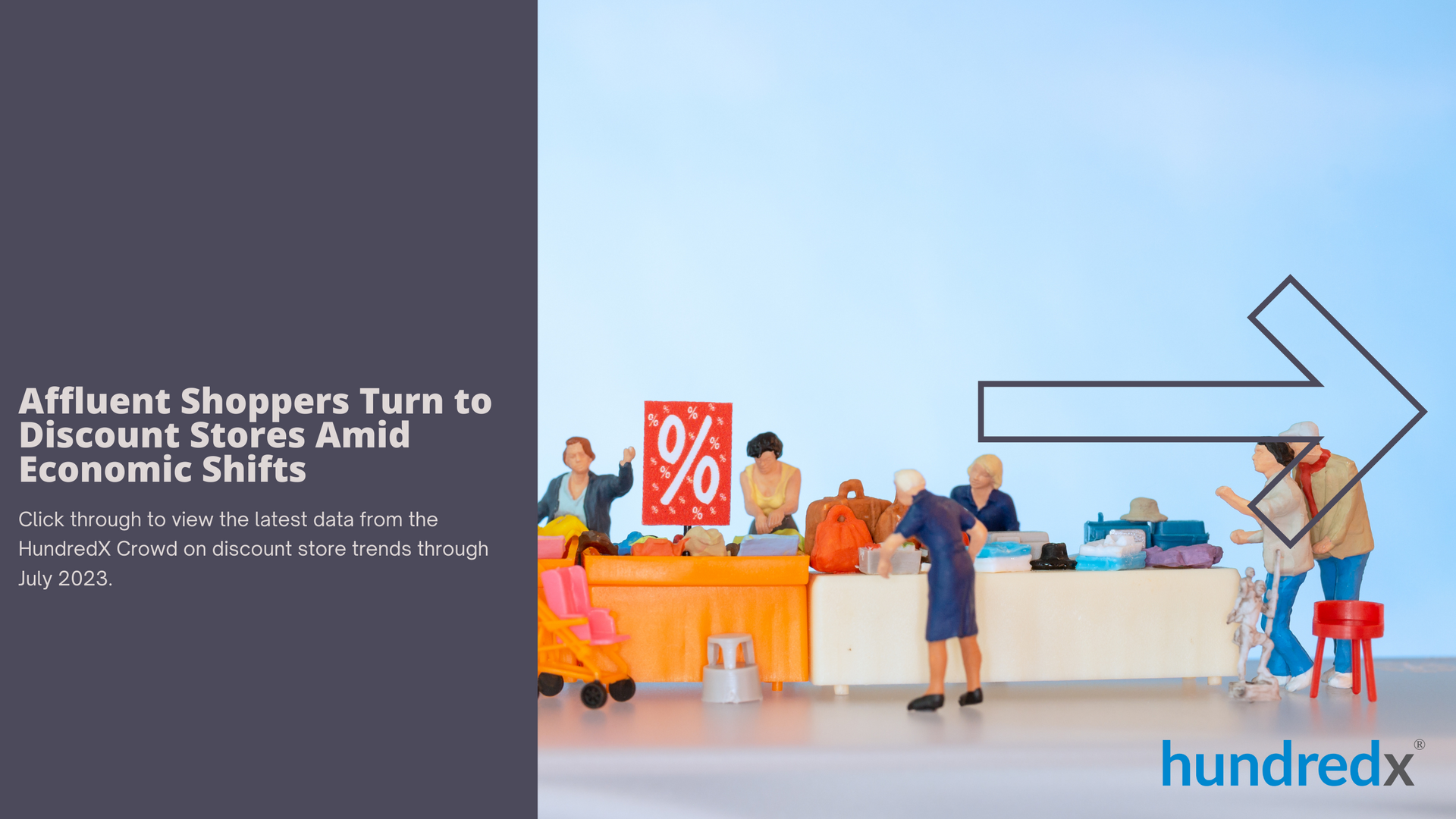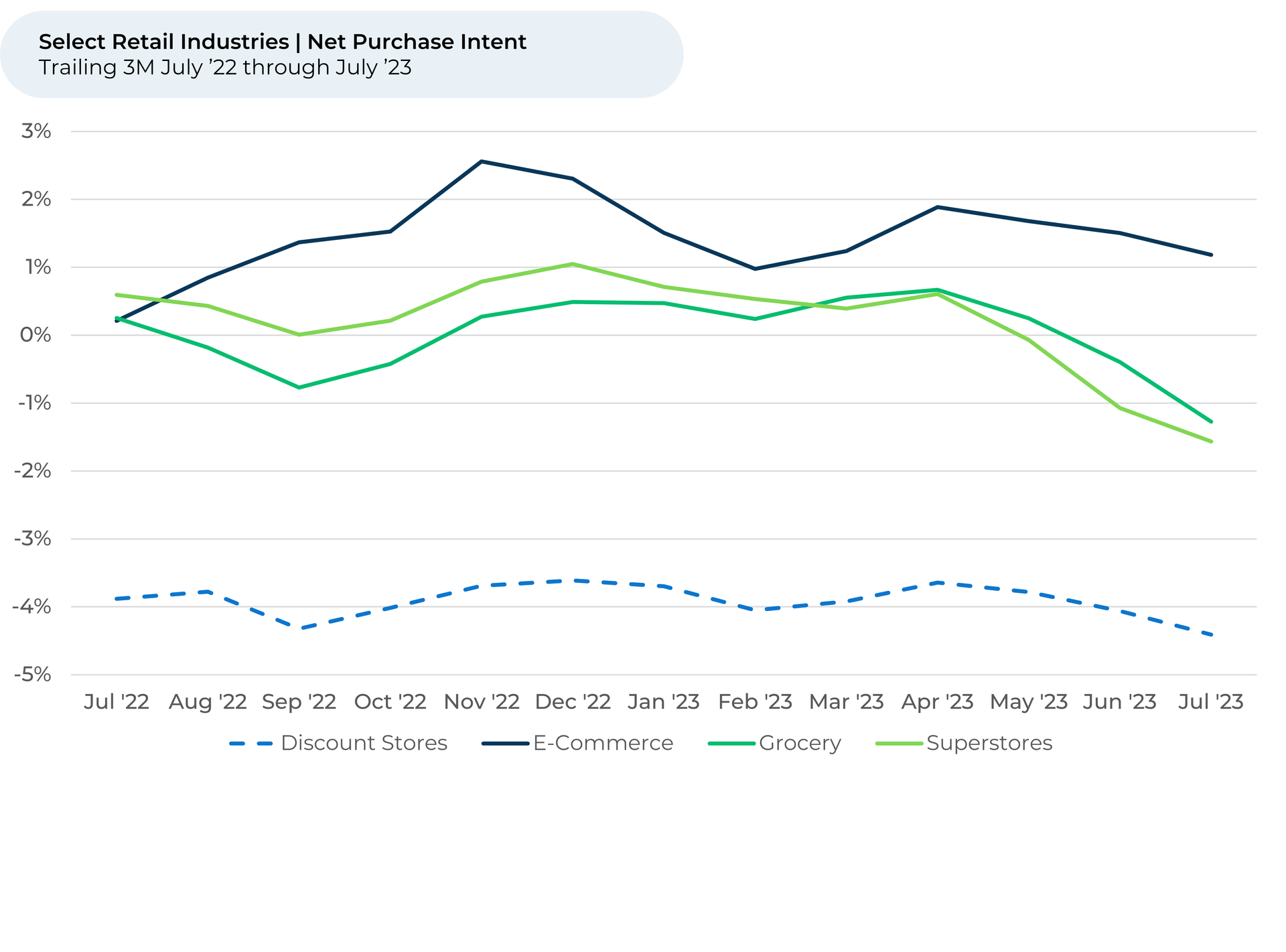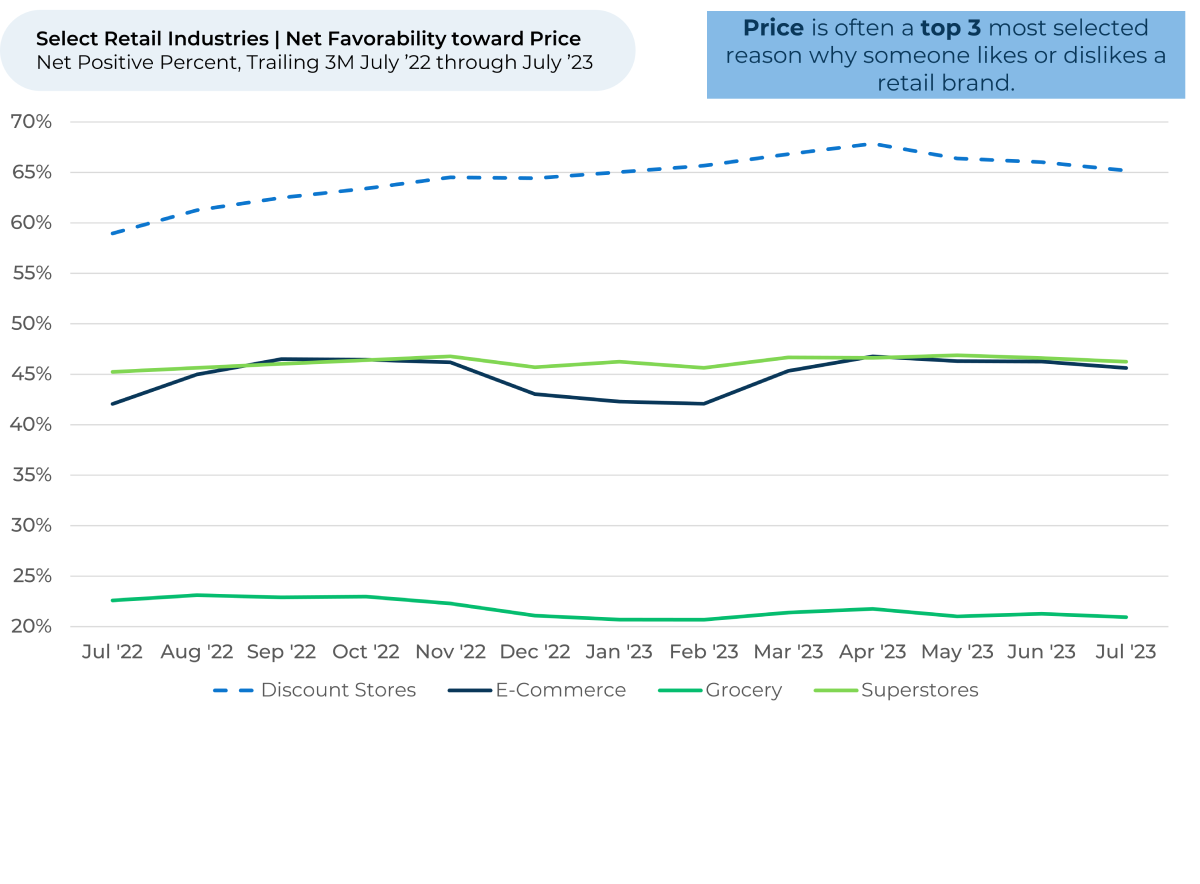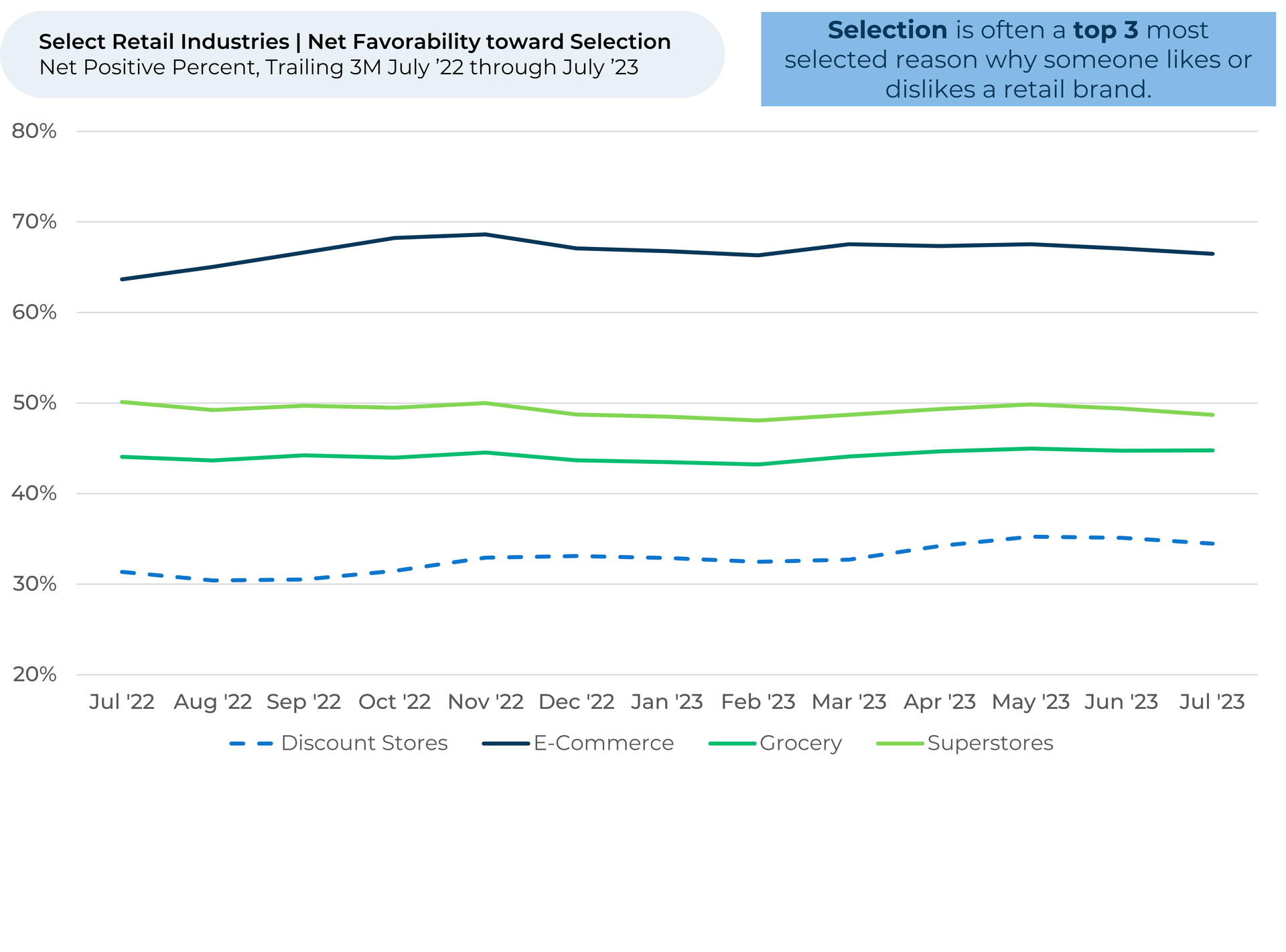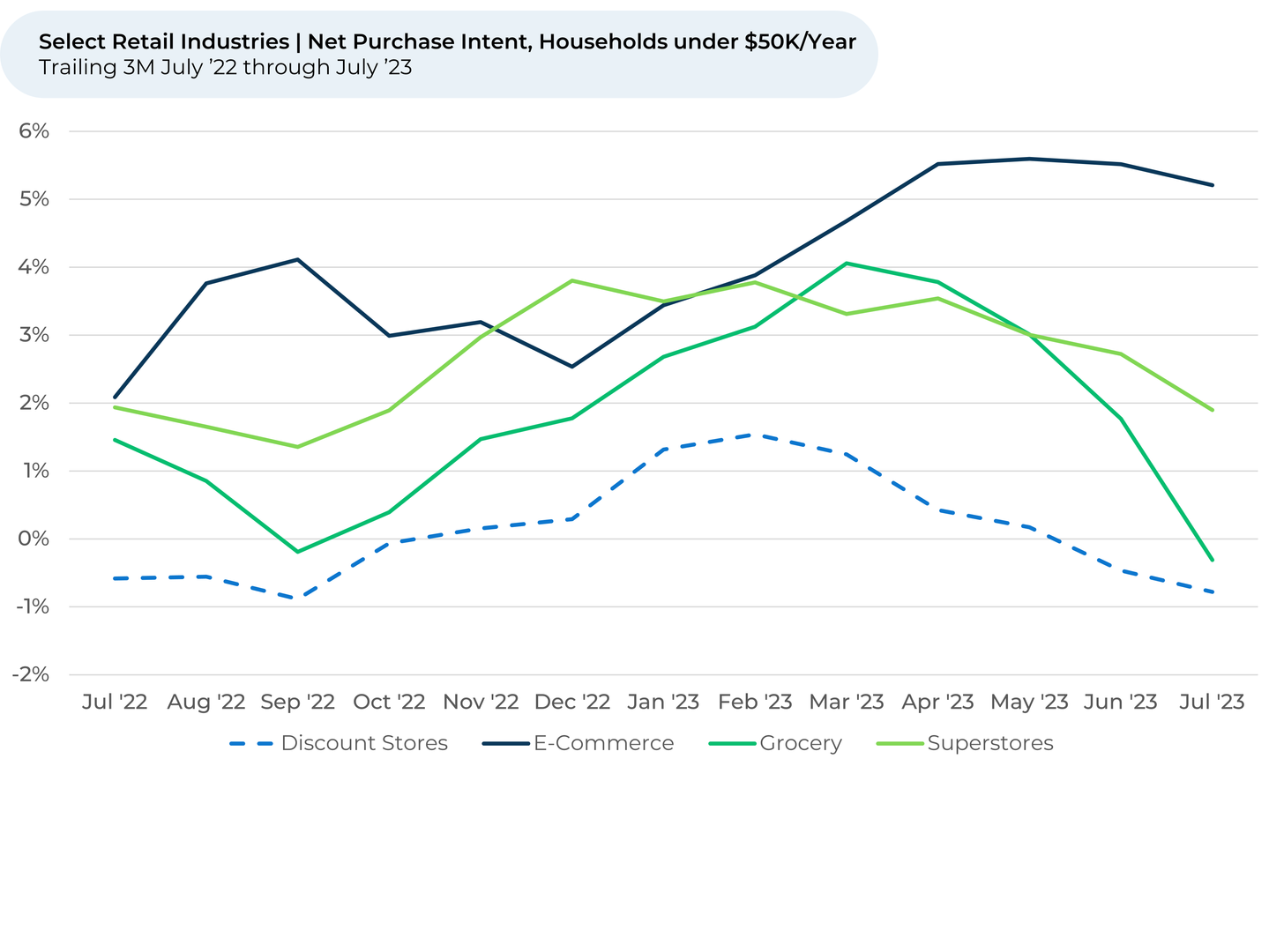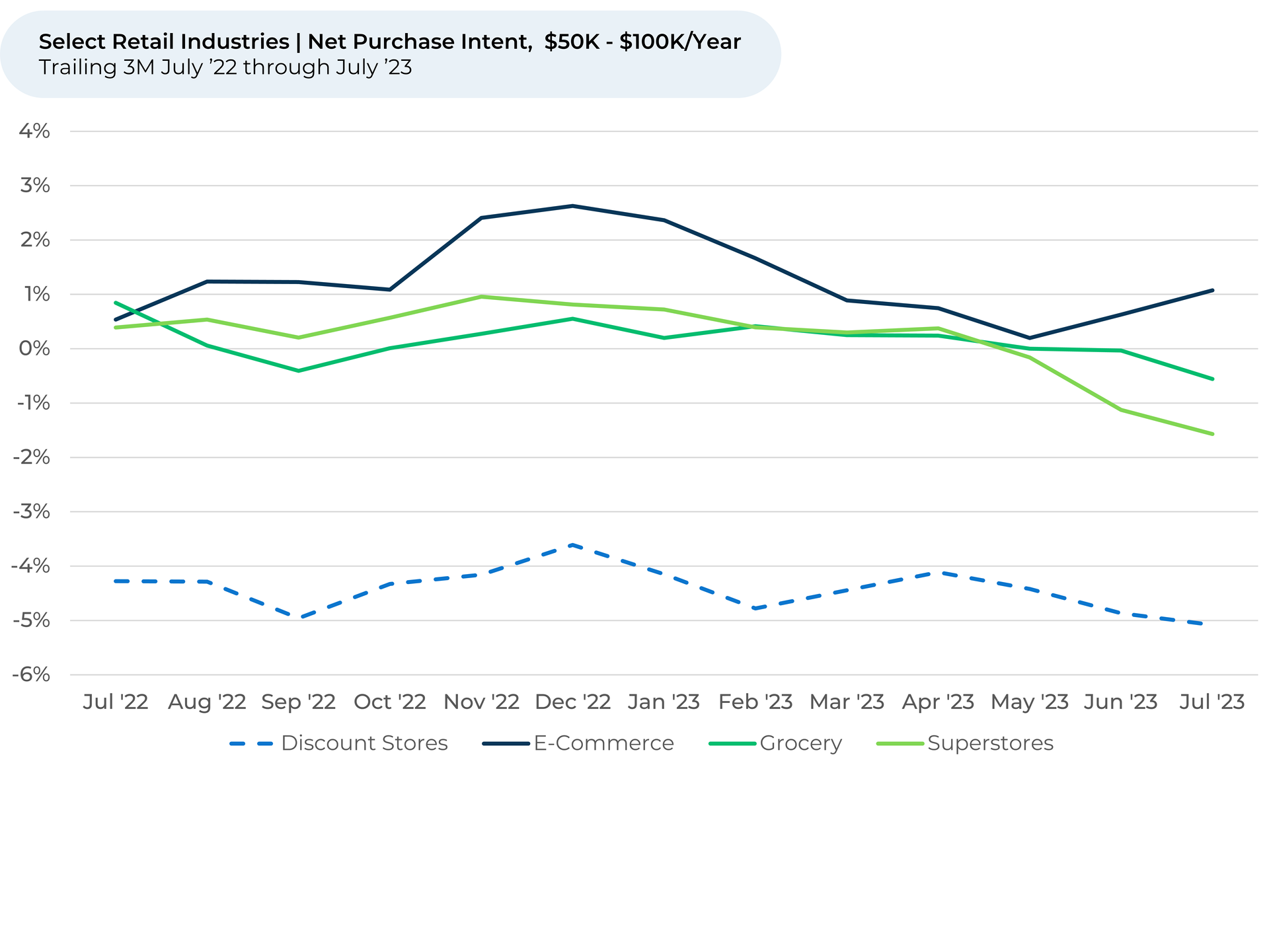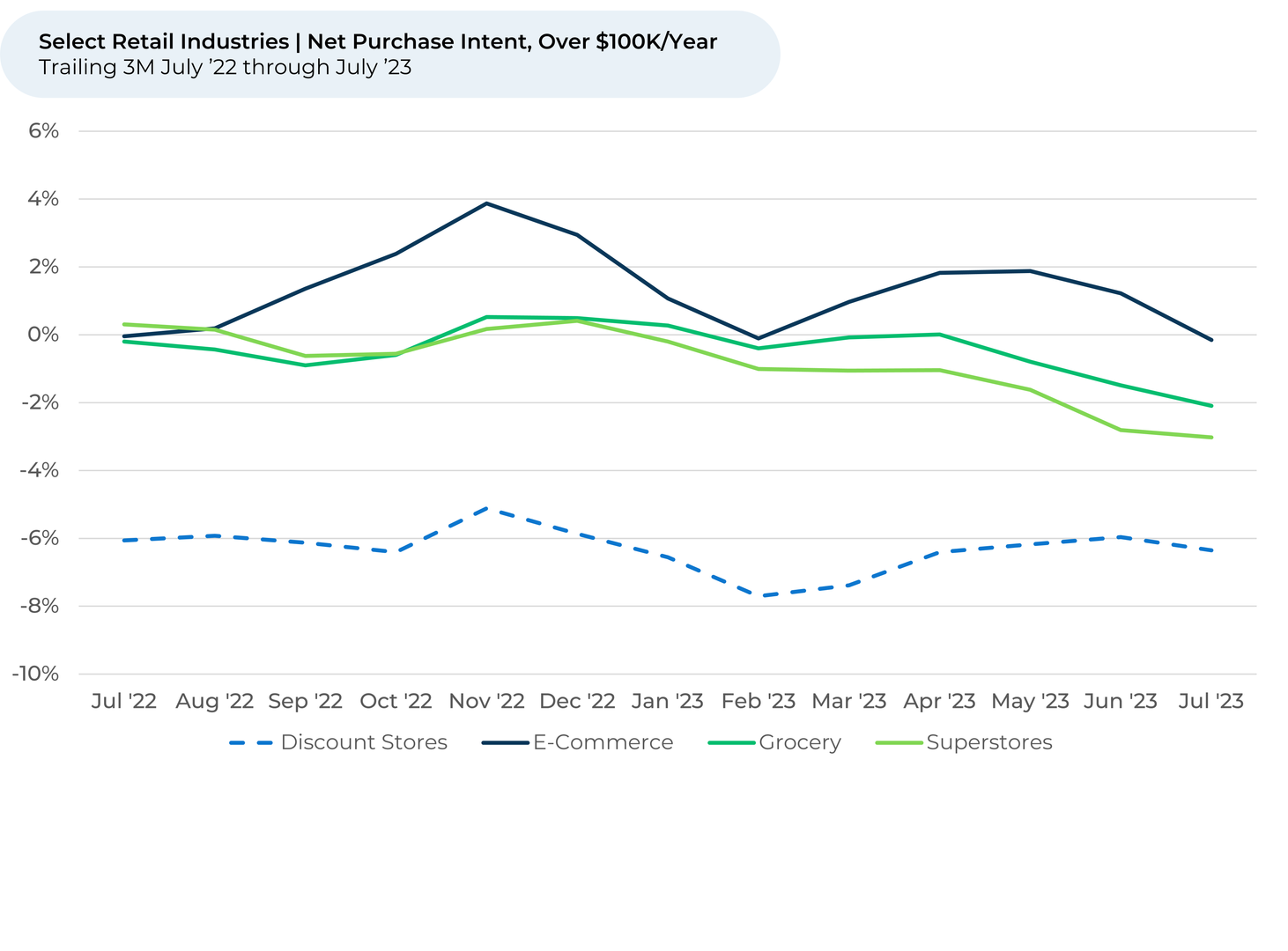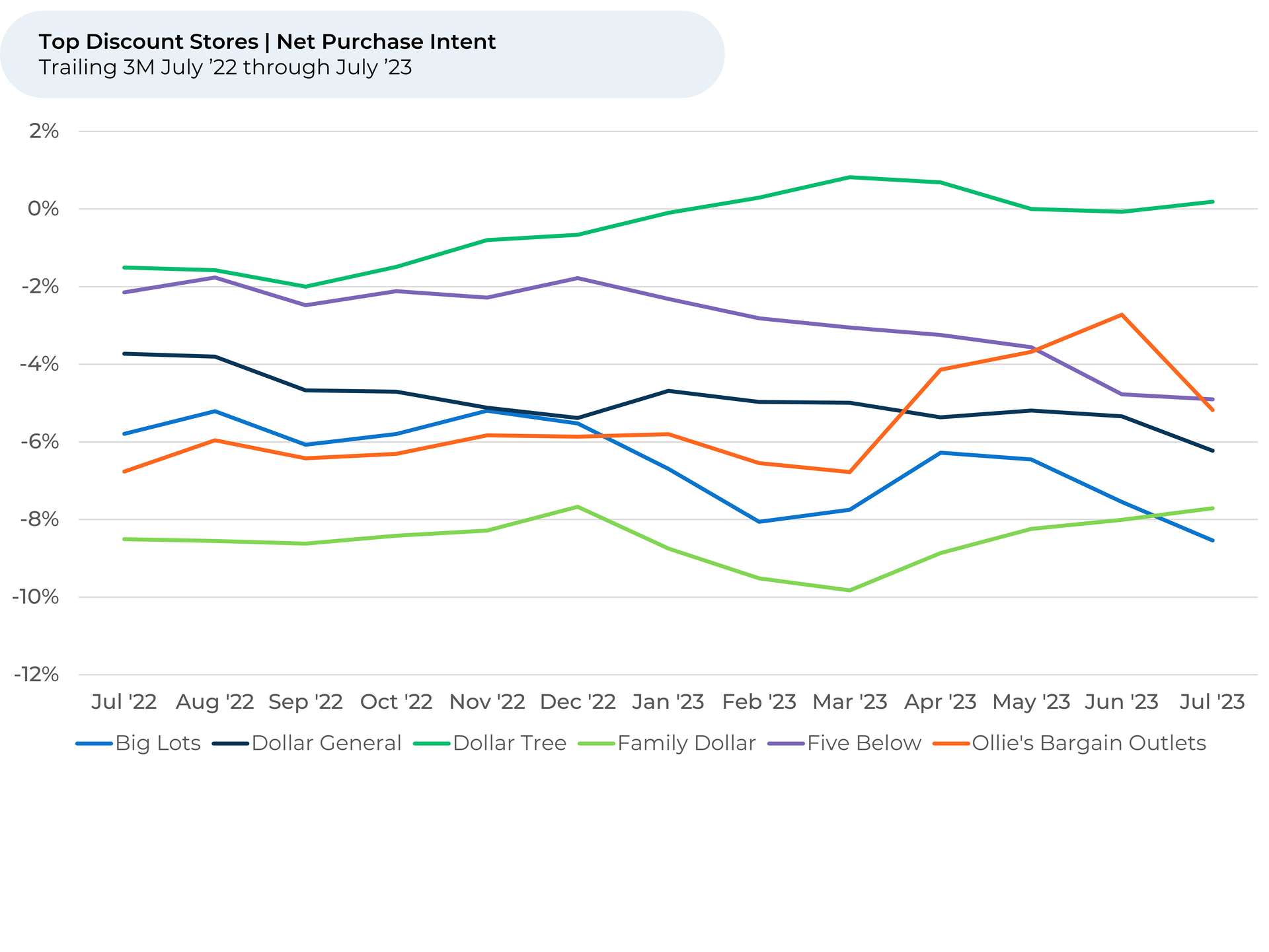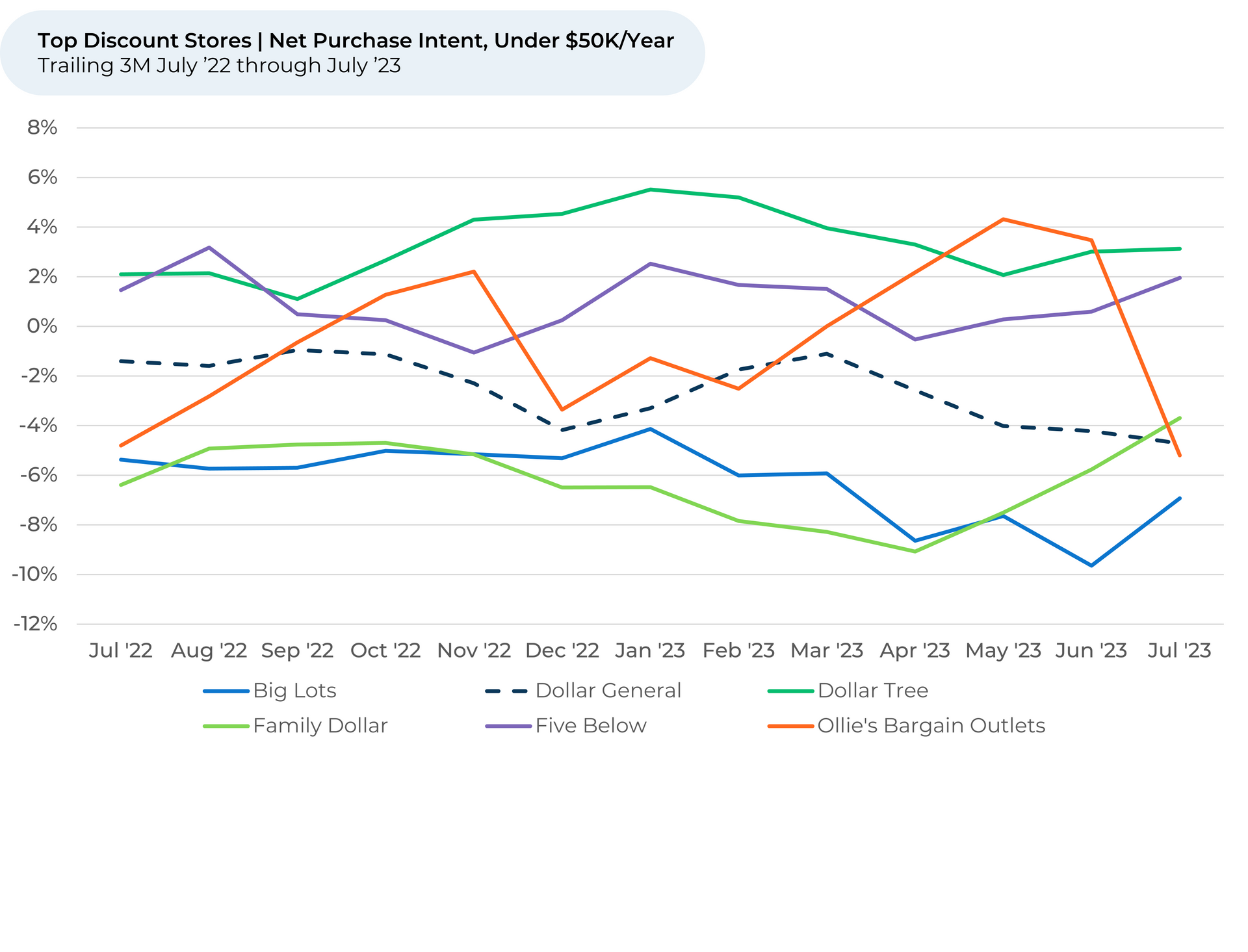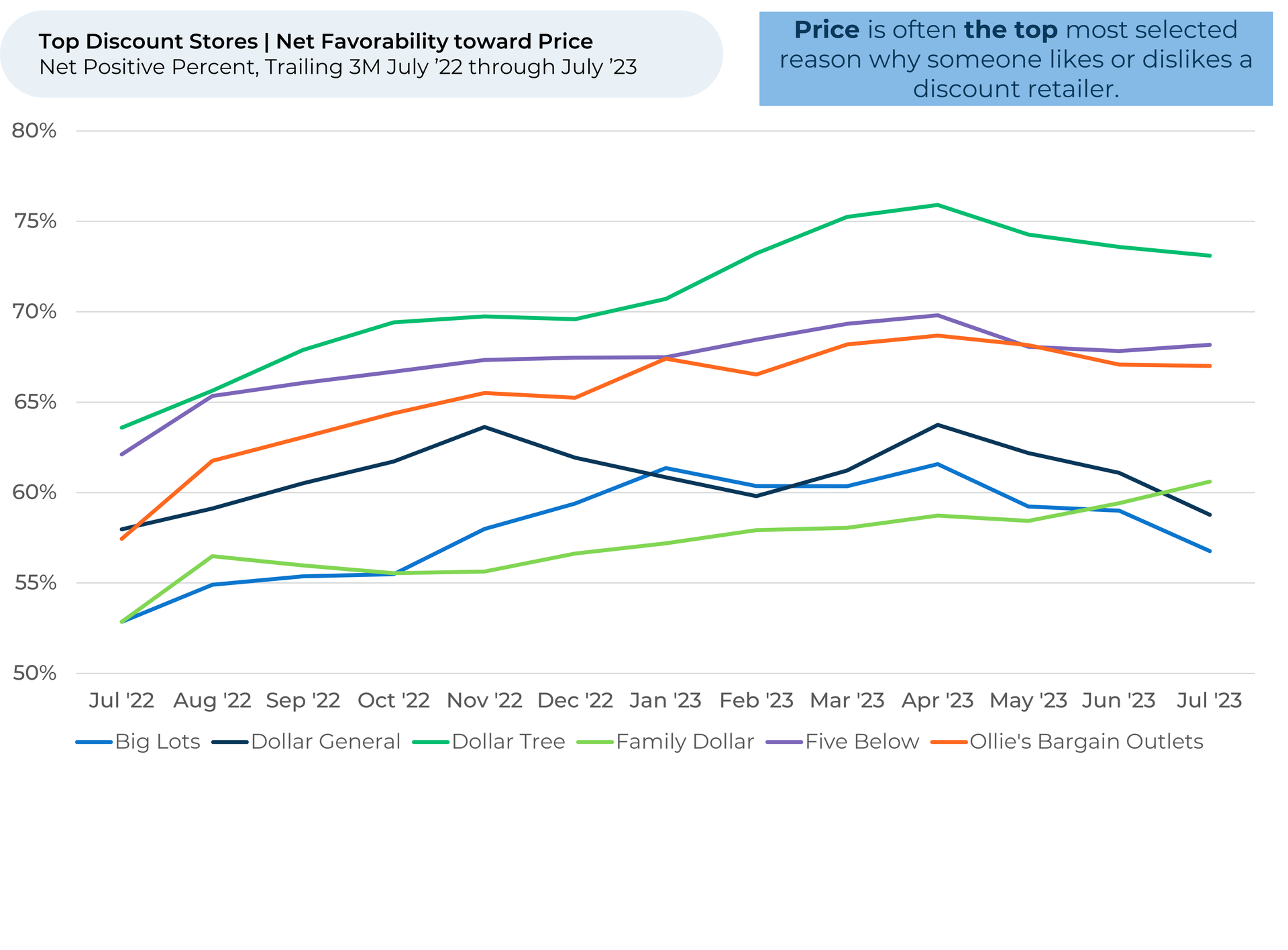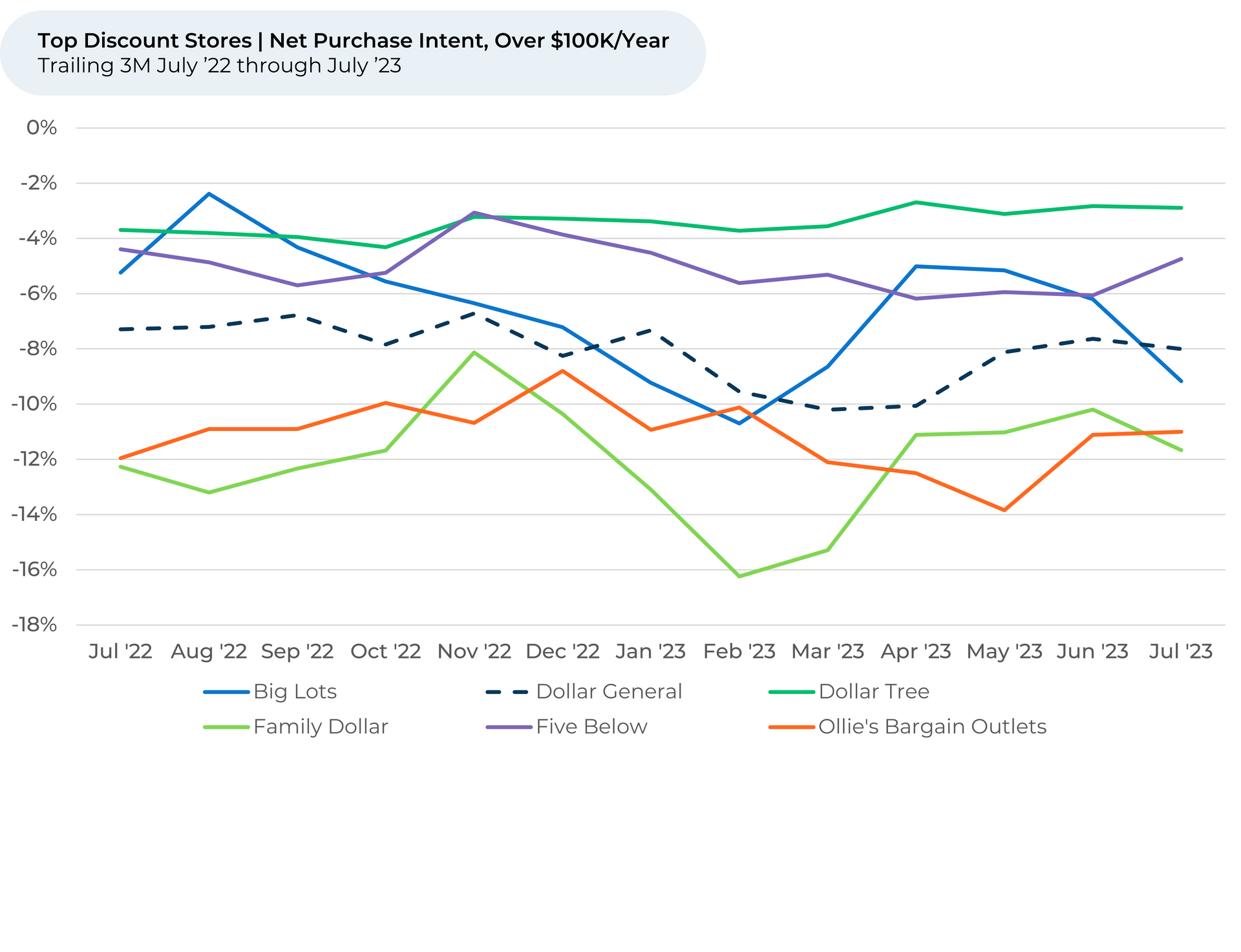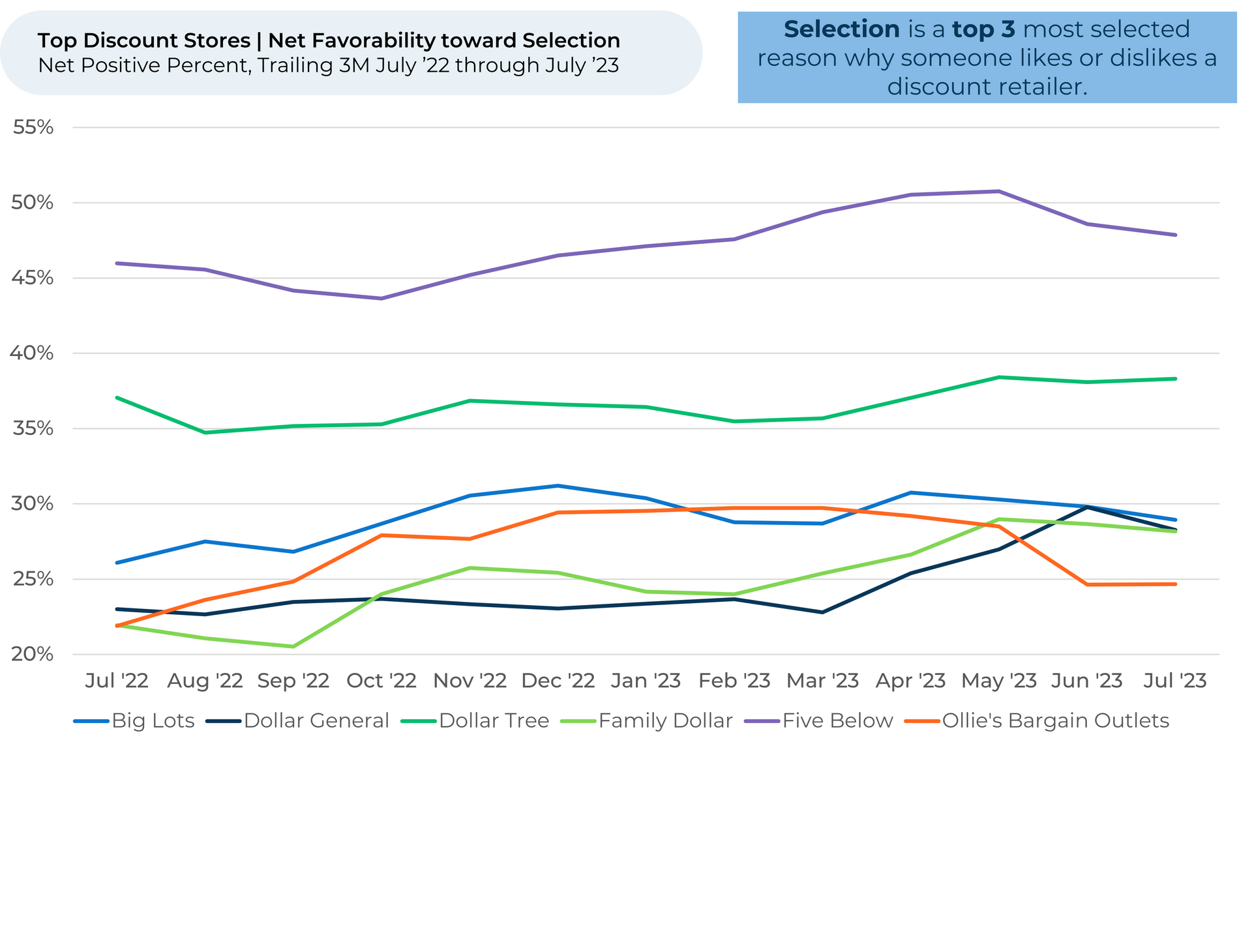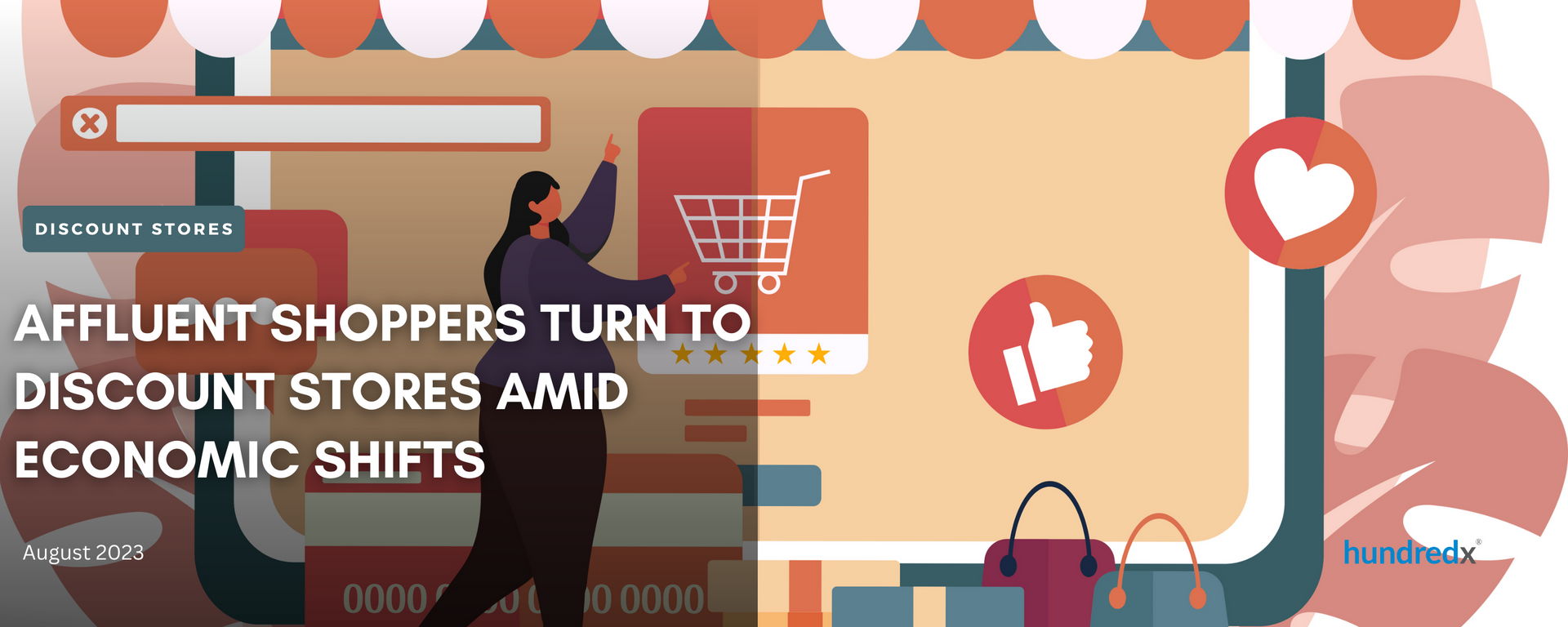
As the Wall Street Journal reported in June, wealthier shoppers are turning to discount stores amid still-high inflation and rising interest rates. HundredX turned to “The Crowd” of discount shoppers to find that, indeed, Americans making more than $100,000 annually are the most loyal in their intent to keep shopping at discount stores despite their recent price increases. By introducing new grocery options, like fresh produce, some dollar stores are succeeding in drawing in wealthier customers.
Analyzing more than 1.1 million pieces of customer feedback across the retail sector, July 2022 through July 2023, including 80,000 from 7 discount stores, we find:
Key Takeaways
- Focusing on segments of retail that sell staples, Purchase Intent¹,² has been most resilient for discount stores and e-commerce this year. Purchase intent fell less for those sectors (1%) in the last three months than it did for grocery and superstores (2%).
- We believe the 1% slip is likely due to recent price hikes by discount stores looking to increase profits amid higher wholesale and material costs. Net favorability³ toward Price fell 3% for discount stores since April, more than other retail industries selling similar items.
- While Purchase Intent dipped for low- and middle-income discount store customers, it stayed relatively steady for the highest-income customers (households making $100K+/year) over the past three months. By contrast, it fell with the highest income customers for e-commerce, grocery, and superstores in the last three months.
- Contrary to the industry, Family Dollar (owned by Dollar Tree), is gaining in Purchase Intent among lower-income customers, up 5% from April. The jump corresponds to management efforts to keep prices low at the store.
- By contrast,
Dollar General is up the most for high-income earners (+2%) over the past three months. The increase comes as the store introduces new fresh grocery options.
Discover HundredX insights into Discount Store Trends:
Please contact our team for a deeper look at HundredX's discount stores data, which includes 170,000 pieces of customer feedback across over 7 discount store brands.
- All metrics presented, including Net Purchase (Purchase Intent) and Net Positive Percent / Favorability, are presented on a trailing three-month basis unless otherwise noted.
- Purchase Intent represents the percentage of customers who expect to spend more with that chain over the next 12 months, minus those that intend to spend less. We find businesses that see Purchase Intent trends gain versus the industry or peers have often seen revenue growth rates, margins, and/or market share also improve versus peers.
- HundredX measures Net Favorability towards a driver of customer satisfaction as Net Positive Percent (NPP), which is the percentage of customers who view a factor as a positive (reason they liked the products, people, or experiences) minus the percentage who see the same factor as a negative.
Strategy Made Smarter
HundredX works with a variety of companies and their investors to answer some of the most important strategy questions in business:
- Where are customers "migrating"?
- What are they saying they will use more of in the next 12 months?
- What are the key drivers of their purchase decisions and financial outcomes?
Current clients see immediate benefits across multiple areas including strategy, finance, operations, pricing, investing, and marketing.
Our insights enable business leaders to define and identify specific drivers and decisions enabling them to grow their market share.
Please contact our team to learn more about which businesses across 75 industries are best positioned with customers and the decisions you can make to grow your brand’s market share.
####
HundredX is a mission-based data and insights provider. HundredX does not make investment recommendations. However, we believe in the wisdom of the crowd to inform the outlook for businesses and industries. For more info on specific drivers of customer satisfaction, other companies within 75+ other industries we cover, or if you'd like to learn more about using Data for Good, please reach out: https://hundredx.com/contact.

